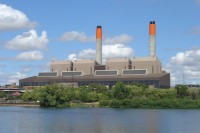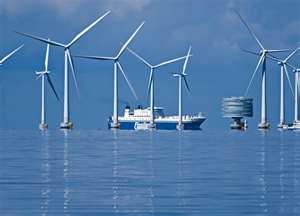
The decision to keep the Huntly coal thermal power station open for another four years is not only contrary to all New Zealand’s commitments and climate targets, it also sends the Ministry for the Environment’s projections of stabilising energy emissions to 2020 up in a cloud of coal smoke.
We seem to have had an extra dose of announcements and activities about climate change in an action-packed month of April.
Climate change minister Paula Bennett signed the UN Paris Agreement. The Morgan Foundation’s “Climate Cheats” report made a big splash. That lead to Jack Tame’s grilling of Paula Bennett. And the Royal Society of New Zealand released two major reports on climate change; one on impacts and another on policy responses. The business-backed Pure Advantage group released a report about enhancing forestry sequestration.
So what did the New Zealand energy industry do to elbow it’s way into the climate change spotlight? How do you beat signing the Paris Agreement or compete with climate fraud?
You just say you are going to burn more coal!
On 28th April 2016, Genesis Energy and Meridian Energy announced they had reached an ‘arrangement’ that would keep the coal-burning Huntly thermal power station open for an extra four years. This deal postpones the expected shut down from the planned 2018 date to 2022.
Continue reading “NZ’s emissions reductions go up in smoke as generators keep Huntly coal burning”

 In
In  Two wind energy items arrived in my inbox in close proximity recently. One was from the NZ Wind Energy Association (NZWEA) congratulating Meridian Energy on turning the first sod at Mill Creek wind farm in the Ohariu Valley north-west of Wellington. It’s a 60 megawatt farm of 26 turbines. The project will cost $169 million and is expected to be commissioned by mid-2014. It will increase NZ’s installed wind capacity from 623 megawatts to 683 megawatts.
Two wind energy items arrived in my inbox in close proximity recently. One was from the NZ Wind Energy Association (NZWEA) congratulating Meridian Energy on turning the first sod at Mill Creek wind farm in the Ohariu Valley north-west of Wellington. It’s a 60 megawatt farm of 26 turbines. The project will cost $169 million and is expected to be commissioned by mid-2014. It will increase NZ’s installed wind capacity from 623 megawatts to 683 megawatts. Grid tie solar power is becoming a no-brainer! Photovoltaic (PV) solar power generation has made enormous advances over just the last two years. The cost of panels and assorted gear has fallen dramatically so that in NZ grid tie solar systems in the 2KW peak power range can be purchased for under NZ$10,000 (including GST) from many outfits.
Grid tie solar power is becoming a no-brainer! Photovoltaic (PV) solar power generation has made enormous advances over just the last two years. The cost of panels and assorted gear has fallen dramatically so that in NZ grid tie solar systems in the 2KW peak power range can be purchased for under NZ$10,000 (including GST) from many outfits. Bit by bit wind energy in New Zealand continues to make progress. It was announced today that the Environment Court has upheld resource consent for Meridian’s proposed Mill Creek wind farm in the Ohariu Valley north-west of Wellington.
Bit by bit wind energy in New Zealand continues to make progress. It was announced today that the Environment Court has upheld resource consent for Meridian’s proposed Mill Creek wind farm in the Ohariu Valley north-west of Wellington.
You must be logged in to post a comment.